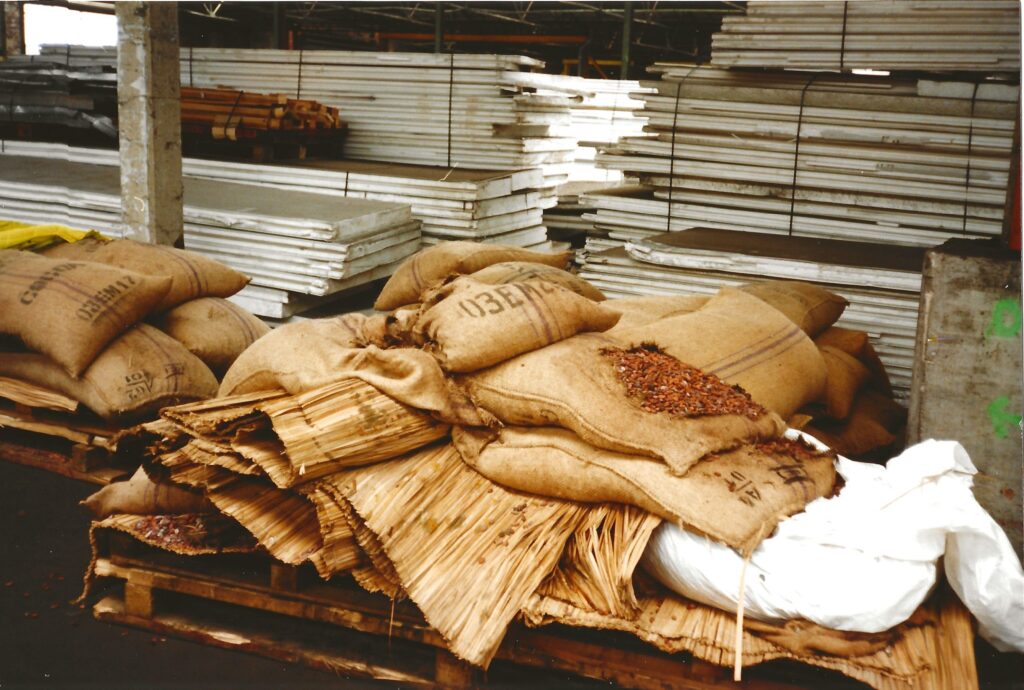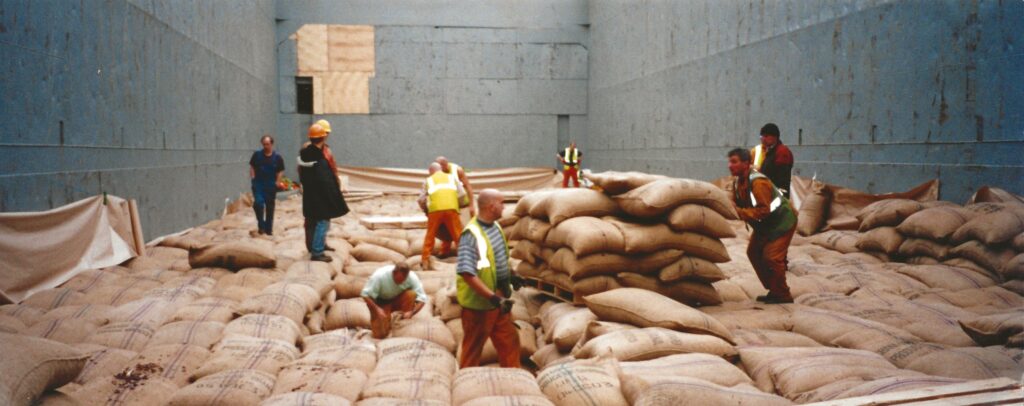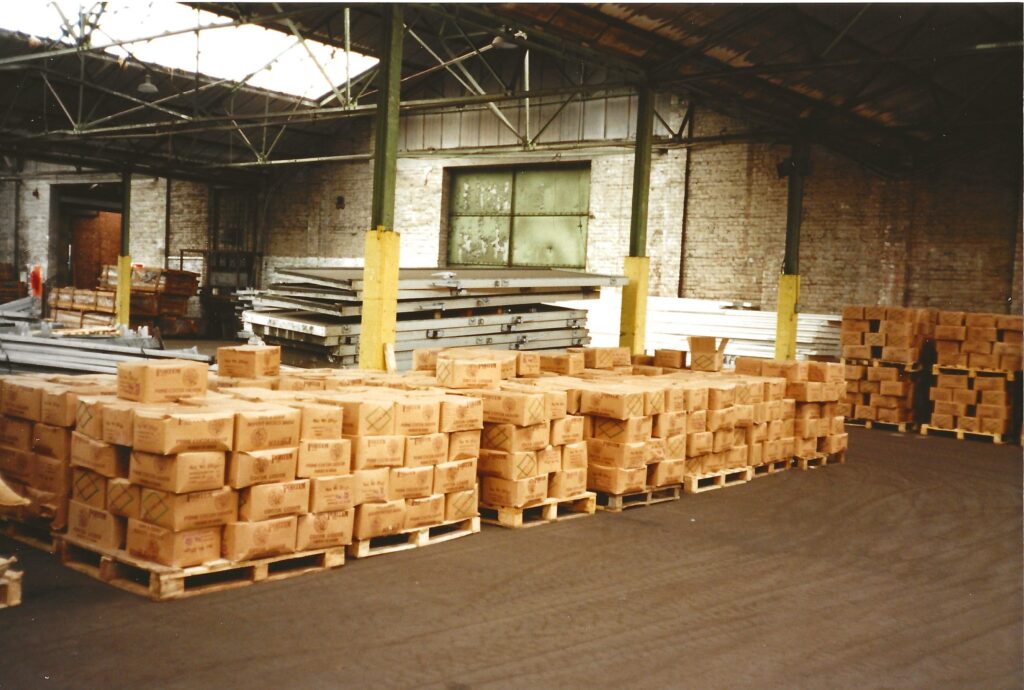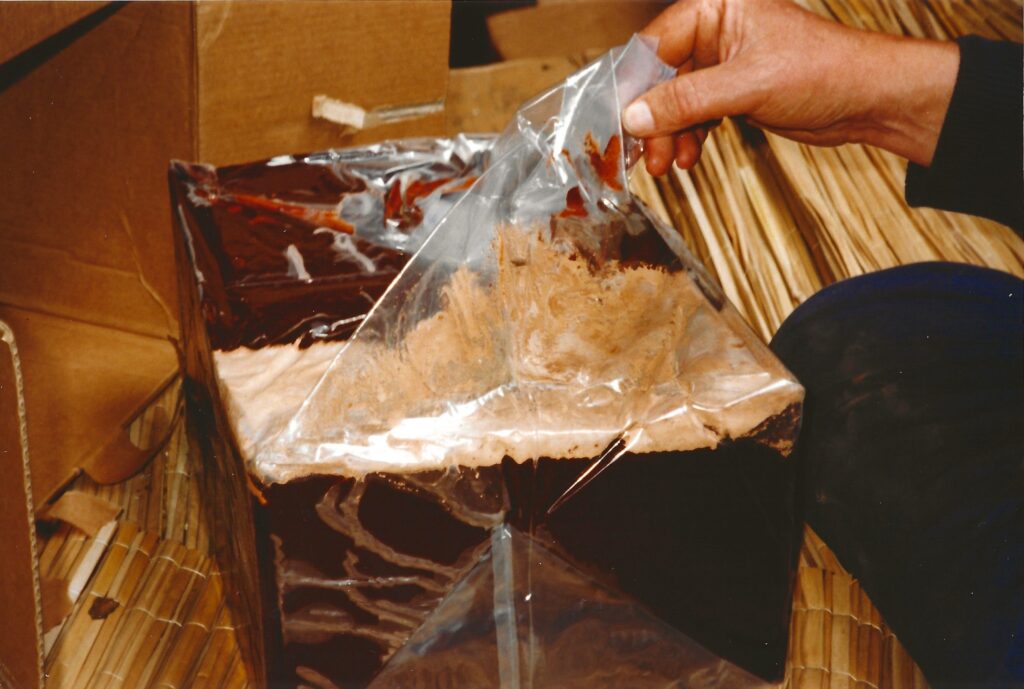As most people will be aware, chocolate comes from cocoa, a product of the plant Theobroma cacao. Most chocolate we consume is sweetened to Western tastes and may contain significant amounts of milk. Chocolate makes use of fats extracted from cocoa. These fats take on a number of crystalline forms at room temperature and have melting points such that chocolate begins to melt and soften in the mouth. These physical properties contribute to the experience of eating chocolate which make it so pleasant.
Cacao trees are grown and harvested in countries in South America, West Africa and also in Indonesia. Most processing takes place elsewhere, requiring cocoa materials of various types to be shipped to those locations.
Cocoa beans form embedded in a fleshy pulp, in pods on the cocoa tree. The harvested beans are subjected to a process known as fermentation, generally in the country of harvest. The fermentation process is an essential stage in developing the flavours and colours we associate with chocolate. Traditionally, it takes place in wooden boxes covered with banana leaves. It is actually the pulp which undergoes the fermentation (i.e. microbiological activity) but the temperatures produced and the enzymes present give rise to a series of biochemical changes within the beans without which we wouldn’t have chocolate.
Once fermented, the beans are dried to below about 7-8% moisture. If this isn’t done, they would deteriorate rapidly and would go mouldy. Traditionally, the beans were then bagged, using jute fibre bags. This was the form of bagged cocoa familiar for many years, often carried on ‘tweendeckers, but now more commonly placed into shipping containers.

Because cocoa is a high value agricultural commodity, cargo care during carriage is very important. Invariably, bagged or bulk cocoa beans are shipped from a tropical country and are inherently warm when shipped. The beans do not conduct heat to any significant extent and so except at the periphery of a stow, they will retain their heat as shipped throughout a voyage. That is an inevitability, and isn’t a problem except when the ship happens to sail somewhere in a colder climatic region. As large amounts of cocoa processing takes place in Western Europe and North America, there is a likelihood that at least for some parts of the year, shipments of cocoa will indeed be exposed to lower ambient temperatures during a voyage, often substantially so. That’s when the problems can start.
Those problems are associated with condensation – ship’s sweat. That is condensation forming on the steel structures around a cargo when those structures are cooled by external cold temperatures. The condensation can then wet bags of cocoa, leading to the beans going mouldy. With each bag having a value of $100 or more, it is important to prevent condensation as much as is possible. That requires ventilation and correct stowage. Appropriate, efficient ventilation and stowage to avoid contact with steel structures are both crucial to the safe carriage of cocoa beans.

One of the subsequent stages in cocoa processing involves grinding the beans. This releases fats from the cellular structure of the cocoa plant and produces a substance known as cocoa liquor. Although the name might suggest this is alcoholic, it is not. It is a dark brown solid at room temperature, with the appearance and taste of unsweetened plain chocolate. Cocoa liquor is sometimes carried by ships in blocks, wrapped in plastic sheeting and placed into sturdy cardboard boxes.


Cocoa liquor can be subjected to a process known as “pressing”. This separates the fats from the cocoa mass/solids. Cocoa fats are known as cocoa butter, pale yellow in colour. Blocks of cocoa butter are packaged similarly to cocoa liquor and carried in shipping containers. The residual cocoa mass after pressing is dark brown in colour and produces the cocoa powder familiar to bakers.
Cocoa fats carried in block form (cocoa liquor or cocoa butter) require careful handling to avoid exposure to heat. Although the blocks are packaged within cardboard boxes, if the contents soften or melt the cartons can collapse leading to handling problems. All cocoa products are sensitive to taint – ships or containers must be clean and free from odours.
Chocolate producers will use blended mixtures of cocoa solids, cocoa butter and cocoa liquor, together perhaps with sugar, milk solids and lecithin to produce different types of chocolate (plain chocolate, milk chocolate, white chocolate). Lecithin is a phospholipid extracted during the degumming of some edible oils such as soya bean oil.
Finally, it is important to know your commodity. It may seem obvious but the properties and behaviour of different commodities produced from cocoa depends on the fundamental physical and chemical parameters of those commodities. Understand these, and apply good cargo care to avoid problems.